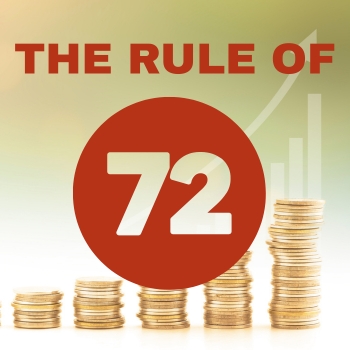The Rule of 72 When Investing

How to estimate how long it will take to double your money with a simple mental formula.
If you're investing money, whether it’s into superannuation, shares, property, or managed funds, you’ve probably wondered: how long will it take to double my money? While complex compound interest calculators exist, there’s one simple mental formula called the Rule of 72 that quickly lets you calculate return on investment.
What is the Rule of 72?
The Rule of 72 is a quick and easy way to estimate how long it will take for an investment to double in value, based on a fixed annual rate of return.
The formula is simple:
72 ÷ annual interest rate (%) = years to double your investment
For example, if your investment earns an annual return of 8%:
72 ÷ 8 = 9 years
That means your money will double in approximately 9 years. No spreadsheets or apps required.
This rule is especially useful for Australian investors who want to compare savings accounts, superannuation returns, managed funds, or share portfolios at a glance.
Where Does the Rule of 72 Originate From?
The Rule of 72 dates back to the 15th century, with roots in early European mathematics. It was first mentioned in a book by Luca Pacioli, the "Father of Accounting," in 1494. While he didn’t invent the rule, he documented the mathematical relationship between interest rates and doubling time.
The reason 72 is used (rather than, say, 70 or 100) is because it's divisible by many common interest rates—like 2, 3, 4, 6, 8, 9, and 12—making mental calculations easier and more accurate across a range of realistic investment returns.
So while it’s not a modern invention, the Rule of 72 has stood the test of time.
Practical Everyday Ways to Use the Rule of 72
Let’s say you’re deciding between three different investment options:
Investment Type | Average Annual Return | Time to Double (Using Rule of 72) |
High-interest savings | 4% | 18 years |
Balanced super fund | 6% | 12 years |
Growth shares / ETFs | 8% | 9 years |
By applying the Rule of 72, you can see which option will grow your money faster, and how much of a difference just a few percentage points can make.
The Power of Compounding, Made Simple
The Rule of 72 is based on the concept of compound interest, where your money earns interest on both the original investment and the interest already earned.
Here’s how powerful it can be:
- $10,000 invested at 6% p.a. will become $20,000 in 12 years
- At 8%, it will double in just 9 years
- At 10%, it will double in just over 7 years
The faster your money doubles, the more doubling cycles you get before retirement and that’s the secret to long-term wealth growth.
How to use the Rule of 72 to your advantage:
1. Compare Investment Products
Compare the average returns of super funds, ETFs, term deposits, or property. If your super returns 6% and your ETF portfolio earns 9%, the ETF portfolio doubles your money faster.
2. Set Realistic Financial Goals
Want to double your investment in 10 years? Flip the rule:
72 ÷ 10 = 7.2%
This means you’ll need an investment that earns at least 7.2% per year to meet that goal.
What About Inflation?
Inflation works in the opposite direction. It reduces the purchasing power of your money over time. You can use the Rule of 72 to understand how quickly inflation will halve your money’s value.
Example:
If inflation is 3%:
72 ÷ 3 = 24 years
That means your money will lose half its value in about 24 years if it’s not growing faster than inflation. This is a major reason why leaving money in low-interest savings accounts can cost you in the long run.
Limitations of the Rule of 72
While it’s a helpful mental shortcut, the Rule of 72 has limitations:
- It’s most accurate for interest rates between 6% and 10%
- It assumes a consistent annual return, which real-world investments rarely deliver
- It doesn’t factor in taxes, fees, or market volatility
That said, it’s still a valuable planning tool when comparing general returns or setting benchmarks for investment performance.
Let Chat.
At Cashflow Financial, we help clients make smarter decisions with their money by:
Reviewing your current super and investments
Helping you create a personalised wealth-building strategy
Showing you how to take advantage of compound growth and minimise fees
Ensuring your money works as hard as you do
Let’s work together to create a plan that puts wealth building into action for you.